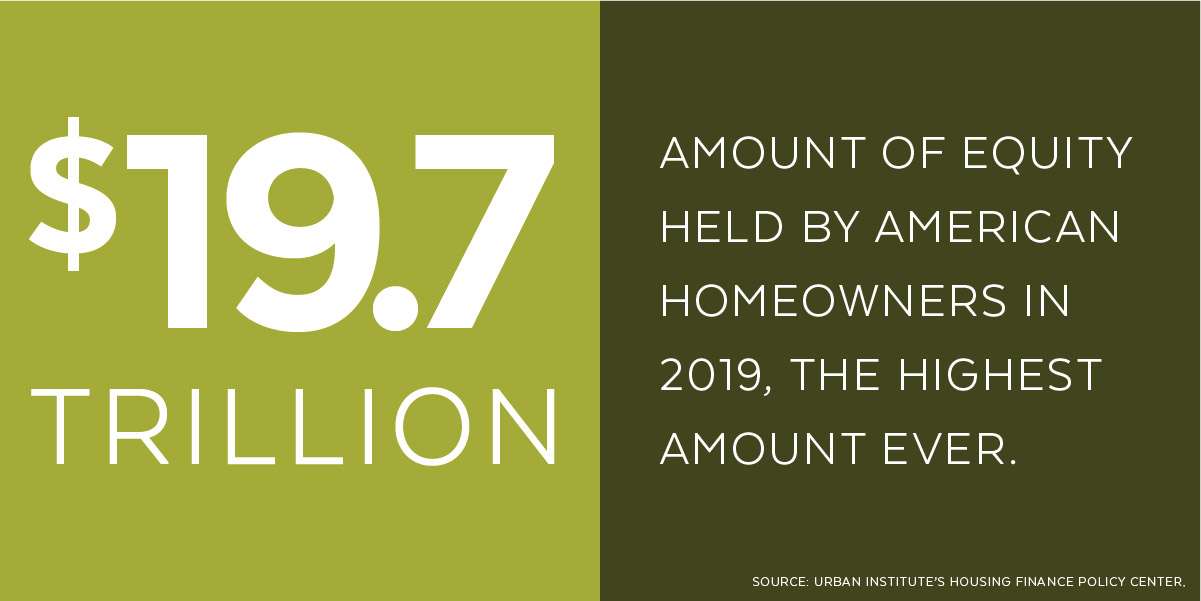What is a HELOC and is it right for me?
What is a HELOC?
A home equity line of credit is a loan where the lender agrees to lend a maximum amount within a set time period, and the collateral is the borrower’s equity in their house.
Homeowners who want to consolidate high-interest debt or finance home improvement projects can tap into their home’s equity with a HELOC, and get credit they borrow against when needed, unlike the lump sum of a traditional home equity loan.
HELOCs have two phases. In the draw period, usually 5-10 years, most lenders require a minimum monthly interest-only payment. During repayment the monthly minimum payment amounts increase to cover principal as well as interest.
HELOCs have a revolving balance that gives you control over how much you owe. If your HELOC available funds are $100,000 but you’ve only spent $5,000, you pay down only that $5,000, plus interest, just like a credit card. HELOCs also come with variable interest rates, and monthly payments vary depending on how much is borrowed, when it gets borrowed and what your current interest rate is.
What is a HELOC not?
A HELOC is not quite the same thing as a Home Equity Loan. They’re both also called ‘second mortgages’, but a closed-end Home Equity Loan is a one-time lump sum with a fixed interest rate. HELOCS are open-ended and have a lot of variables, including interest rates.
A HELOC is not refinancing. ‘Refi’, a common practice for mortgage holders, is a kind of ‘escape hatch’ to get you out of an adjustable-rate mortgage that’s higher than current market rates and then lock you in to a lower, more favorable interest rate for the rest of your loan.
A corollary to refinancing is the ‘Cash-Out Refi’, where you not only swap your old mortgage terms for new ones, but also cash out on the equity you’ve built up. That means:
- A lump-sum payment of equity value
- Old mortgage replaced by a new one with current interest rates
- New mortgage means you pay new closing costs
- New mortgage terms likely change your monthly mortgage payment
A Cash-Out Refi can be more of a commitment than a HELOC. You replace your old mortgage with a new one, and that could change your monthly budget. That’s not exactly bad, because you could refinance into better terms than you had before.
HELOC pros and cons:
- Borrow as much as you need, up to your predetermined limit
- Initial minimum draw required
- Pay less during the draw period and more during the repayment period
- Adjustable interest rates make repayments less predictable
- Works better for short-term borrowing
- HELOCs typically have much lower interest rates than credit cards
- HELOCs are available for a finite period of time
- HELOCs are secured by collateral in the form of home equity
Reasons why a HELOC is not right for you:
HELOCs typically have lower up-front costs than home equity loans, but they may require an appraisal and they might include loan origination, early closure, and/or an annual fee.
If housing prices drop, borrowing against your home equity also means you could end up underwater, owing more than the value of your home. You’re using your home as collateral, borrowing against your house. If you can’t make your monthly payments, you risk foreclosure.
A home equity loan offers a fixed interest rate that will never change, but HELOCs come with variable rates, meaning your rate can go up or down based on the decisions of the Federal Reserve, which can be good or bad. As a borrower, this equates to more uncertainty for you, particularly since HELOCs can last 30 years.
A HELOC can be risky for undisciplined borrowers because they are so easy to access and offer the chance to make interest-only payments. Quick access to cash can feel remarkably painless at first, but financial reality has a long history of breaking through over time.
Reasons why a HELOC is a good idea:
For several years, interest rates have sat at or near all-time lows, and home equity lines of credit let you take advantage of this fact, with lower interest rates and lower initial costs than credit cards. The average APR on variable-rate credit cards is around 17.4 percent, while some of the best home equity rates are below 5 percent.
And if you are fixing up your attic or finishing the basement, you can deduct interest paid on both a home equity line of credit and a home equity loan if you use the money for home improvements, in spite of the many tax breaks temporarily eliminated by the Tax Cuts and Job Act of 2017.
In plain english, the IRS says interest payments on home equity products are deductible if and when “they are used to buy, build or substantially improve the taxpayer’s home that secures the loan.”
Call or text a Empeople loan officer to learn more if a HELOC is right for you.





